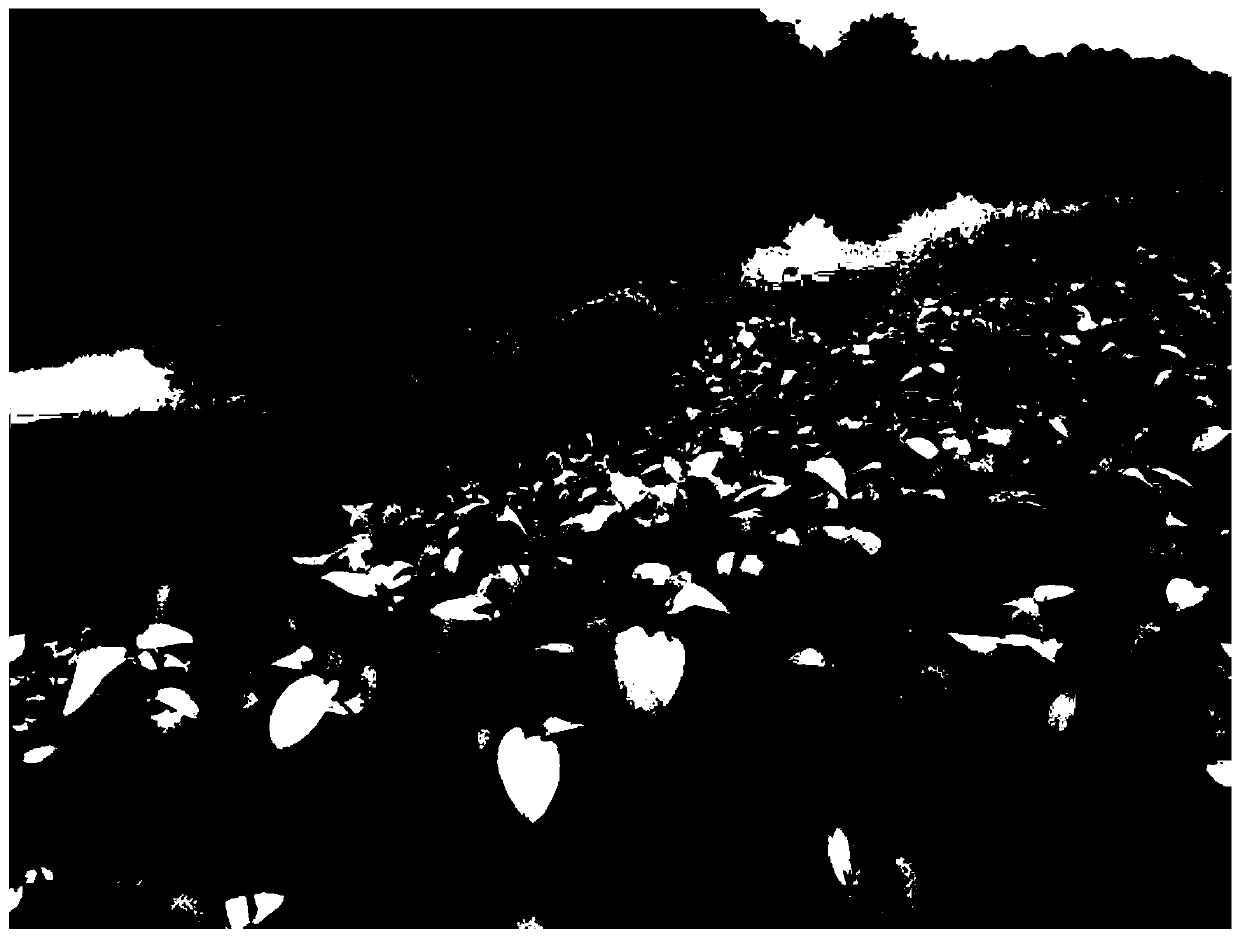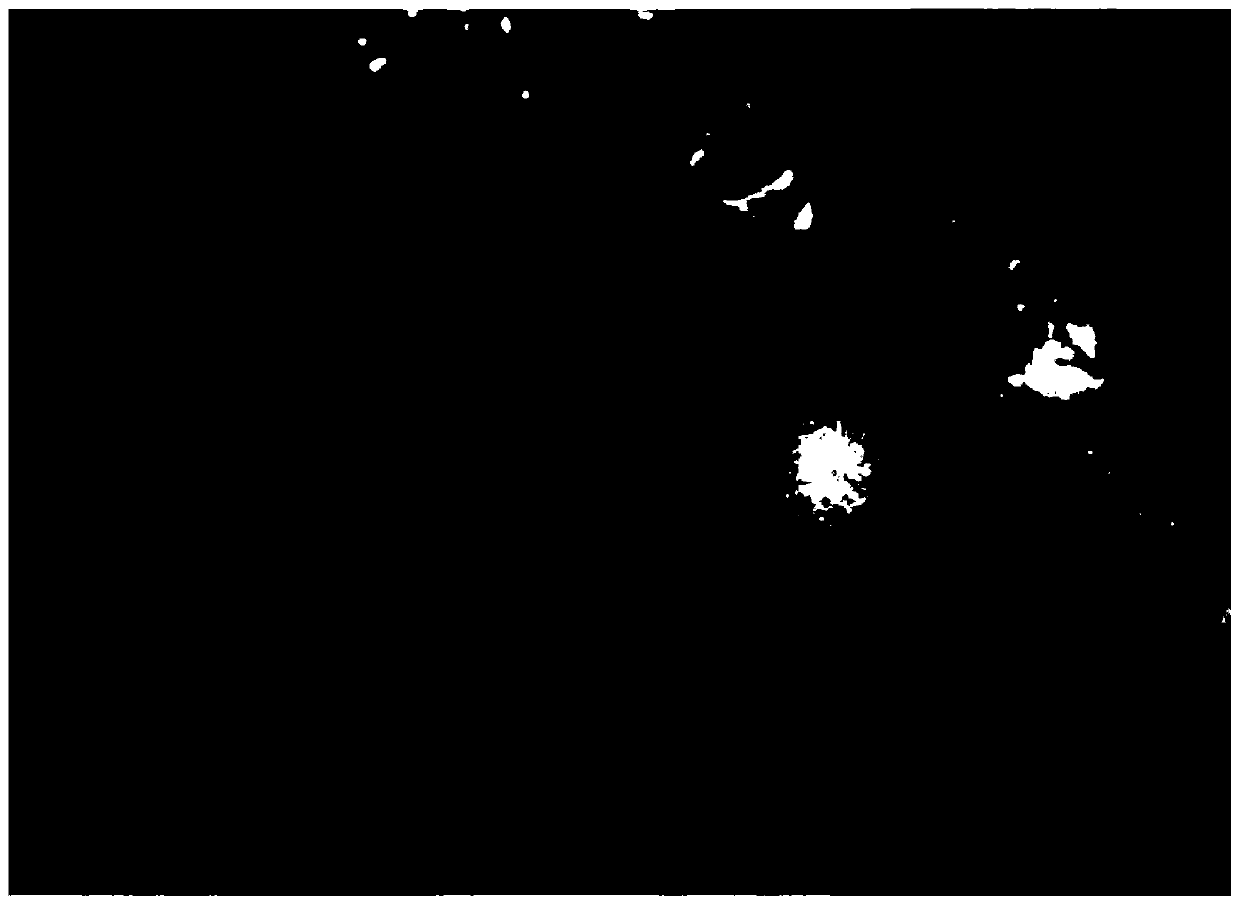Method for using aerial stems of saururus chinensis for rapid propagation
A grassland and fast technology, applied in the field of plant reproduction, can solve the problems of withering and restrict the application of three white grasses, and achieve the effects of strong germination and regeneration ability, high yield, and improvement of seedling reproduction efficiency.
- Summary
- Abstract
- Description
- Claims
- Application Information
AI Technical Summary
Problems solved by technology
Method used
Image
Examples
Embodiment 1
[0037] On May 1, 2018, Sanbai grass was collected on the bank of the river in Nantang Village, Sihui City, Zhaoqing City, Guangdong Province. At this time, it is in the flowering stage and the growth is vigorous. Pull out the Sanbai grass seedlings with relatively consistent growth. The thickness of the main stem is about 1.5cm. ), remove all the leaves, and keep the dense section at the bottom, and use this as cuttings for hydroponic experiments. The water used for the test was pig farm breeding wastewater, which was filled in blue water tanks, with 60L of water per tank, and 15 cuttings of Sanbai grass, which were placed horizontally on the water surface to allow them to float and grow freely. The test period was from May 2 to June 5, 2018, for a total of 5 weeks. The growth of Sanbai grass was regularly observed every week, including the germination rate (number of germinated branches / total number of branches) and seedling height. The site is a simple greenhouse with light...
Embodiment 2
[0041] On August 1, 2018, Sanbai grass was collected on the bank of Nantang Village, Sihui City, Zhaoqing City, Guangdong Province. At this time, the flowers of Sanbai Grass have faded for about one month, and the top leaves appear slightly withered and yellow. Pull out the Sanbai Grass with a relatively consistent growth. About 30cm above the stem section), remove all the leaves, keep the dense section of the bottom node, and transplant it into the experimental field as a cutting in the evening (horizontally placed on the water surface in the paddy field). The test site is Nantang Village, Sihui City. The test field is a paddy field with a width of 1.5m. The ditch between the boxes is 30cm wide and 20cm deep. The row spacing is 40cm×30cm. There are 25 rows of compartments, a total of 2 compartments, and the depth of covering soil is 8-10cm. Half a day before transplanting, go to the test field to inject water in advance to make the soil moist and facilitate the insertion of ...
Embodiment 3
[0045] On August 15, 2018, the aboveground stems of Sanbai grass were collected on the bank of the river in Nantang Village, Sihui City, Zhaoqing City, Guangdong Province. At this time, the Sanbai grass has withered for about one and a half months, and the leaves at the top of the stem are slightly withered and yellow. Select a relatively delicate aboveground stem with a thickness of about 1cm, and cut off the stem section with a length of about 25cm at the base (that is, the stem from the base of the aboveground stem to about 25cm above the base. section), remove all the leaves, and keep the denser stem section at the base, and use it as cuttings to carry out cultivation experiments in the greenhouse of South China Botanical Garden, Chinese Academy of Sciences. The test period was from August 15th to September 12th, 2018, for a total of 4 weeks, and the growth of Sanbai grass was regularly observed every week, including the germination rate (number of germinated branches / total...
PUM
 Login to View More
Login to View More Abstract
Description
Claims
Application Information
 Login to View More
Login to View More - R&D
- Intellectual Property
- Life Sciences
- Materials
- Tech Scout
- Unparalleled Data Quality
- Higher Quality Content
- 60% Fewer Hallucinations
Browse by: Latest US Patents, China's latest patents, Technical Efficacy Thesaurus, Application Domain, Technology Topic, Popular Technical Reports.
© 2025 PatSnap. All rights reserved.Legal|Privacy policy|Modern Slavery Act Transparency Statement|Sitemap|About US| Contact US: help@patsnap.com



